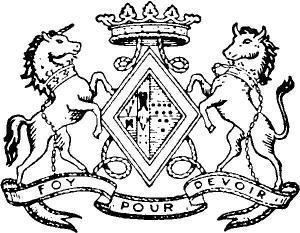Established 1631 Ages 11–18 Extinction 1988 (grammar in 1967) | Gender Boys Founded 1631 Closed 1988 (grammar in 1967) | |
 | ||
Location White Hart LaneTottenhamMiddlesex (Greater London)N17 8HLEngland, UK Local authority Founder John Seymour, 4th Duke of Somerset Houses Somerset, Morley, Bruce and Howard | ||
Memorial to ww2 rocket attack tottenham grammar school
Tottenham Grammar School (TGS) was a renowned grammar school in North London, with local football connections.
Contents
- Memorial to ww2 rocket attack tottenham grammar school
- History
- Tottenham Hotspur
- Former building
- New building
- V2 explosion
- New buildings
- Comprehensive
- Foundation
- Notable former pupils
- Other Tottenham schools
- References
History
A Tottenham grammar school had existed for centuries. Its origins are unclear, possibly dating back to 1456 but in 1631 a legacy was left by Sarah, Duchess of Somerset to extend the existing school house and provide free education to poor children from Tottenham.
Tottenham Hotspur
In 1882, pupils from the school and from St John's Presbyterian School formed Hotspur F.C. at All Hallows' Church. The name came from the Hotspur Cricket Club, of which boys from the school were members. This football club subsequently became Tottenham Hotspur F.C..
Former building
In 1910, the old school was knocked down apart from the Masters House (later to be destroyed by bombs in World War II). The new building on Somerset Road, built by Middlesex County Council, was used as the school until 1937. The new building was opened by Algernon Seymour, 15th Duke of Somerset on 12 October 1910, and cost £10,327. The school had four houses - Somerset, Morley, Bruce and Howard.
In 1971 it became the Education Department of Haringey Council.
New building
On 26 February 1938 due to increased numbers at the school, a site was opened on Creighton Road near White Hart Lane by Middlesex County Council. It housed 450 boys. In the early part of the war, at the time of the Blitz, the boys were evacuated to Chelmsford, to be taught at King Edward's Grammar School in the afternoons. The boys lived around the village of Writtle, west of Chelmsford; some also went to Hatfield Peverel, specifically Hatfield Peverel Priory.
From 1941, once the Blitz had finished (10 May 1941). An Army Cadet Corps was formed, along with an Air Training Corps in 1942 - 1571 Squadron, now known as Aylward Squadron.
V2 explosion
On 15 March 1945, a V-2 rocket landed on the corner of White Hart Lane and Queen Street, killing two fourth-year boys, with another losing his right arm.
New buildings
In 1960 new buildings opened for the sixth form and laboratories. By this time the school had 700 boys.
Comprehensive
In 1967 the school merged with the Rowland Hill Secondary Modern School in Lordship Lane, which was named after Sir Arthur Rowland Hill and had opened in 1938, to form the Somerset School, a voluntary-controlled boys' comprehensive school. The school's houses were now Baxter, Coleraine, Drayton and Hill.
Due to falling numbers this school closed in 1988, by which time it was situated on one site on White Hart Lane. The Lower School was demolished to become a housing estate on Somerset Close. The Upper School was demolished in 1989, becoming a housing estate on Somerset Gardens, and a site for Middlesex University - halls of residence for the Tottenham Campus, which closed in 2005 (the former St Katharine's College teacher training college).
Foundation
The sale of the school provided £9.1 million, which was used to set up a charitable foundation, the Tottenham Grammar School Foundation.
